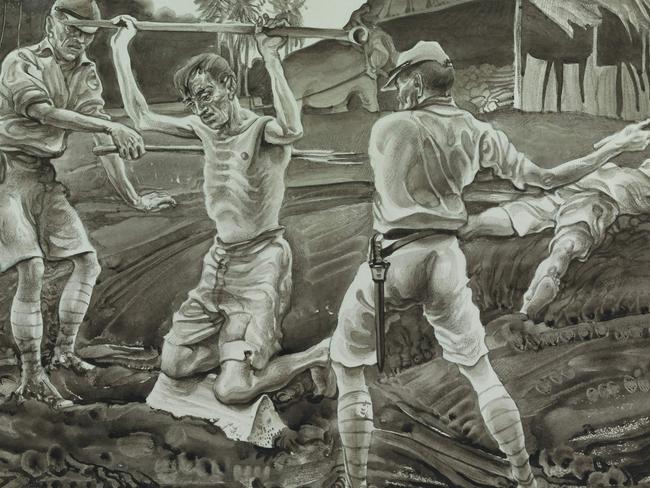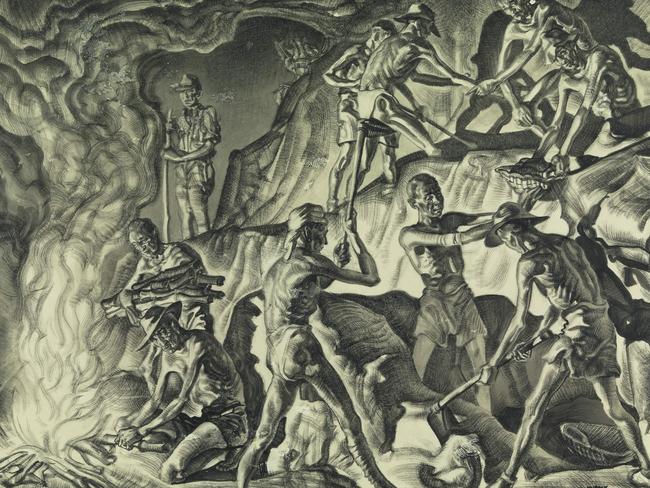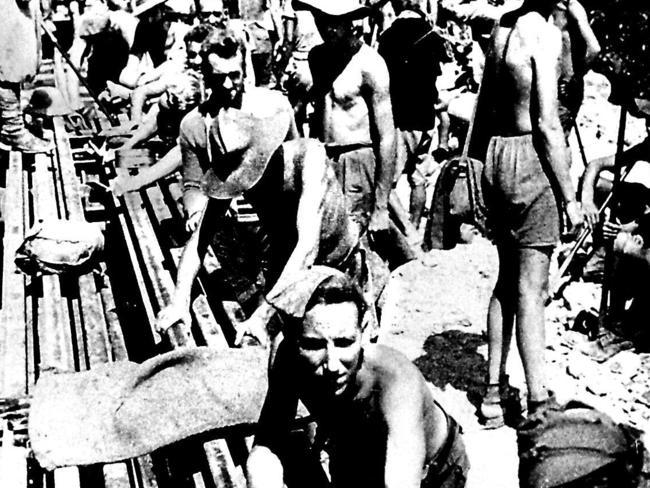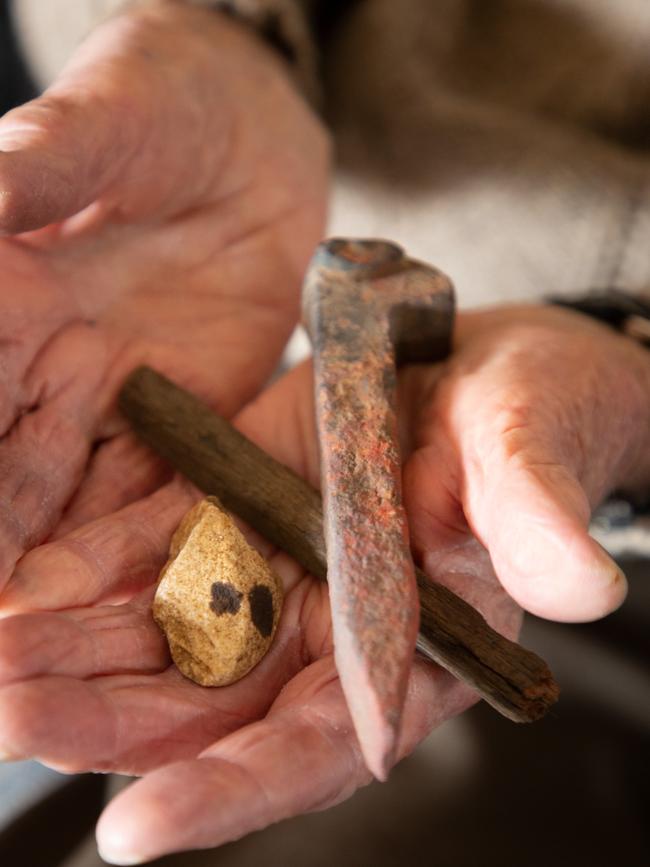Death Railway veteran Jim Kerr revisits Hellfire Pass in VR and shares his story of survival
Jim Kerr’s first experience as a prisoner was seeing slain civilians’ heads stuck on poles. Then he became a slave labourer for the enemy.
Hellfire Pass and the Death Railway.
The names are horrific enough, but nothing compared to the reality of what happened there.
Jim Kerr knows; and he wants others to know as well.
One of the few remaining survivors of World War Two’s Death Railway — a 400km railroad built for Japan’s military across the mountains and jungles of Thailand and Burma, by an army of forced labourers — he can “never forgive nor forget what the Japanese did”.
“There’s still a lot of people that just don’t realise or have no knowledge of what went on with the Japanese,” he said.

“There were so many atrocities committed in places like Borneo and the Death Railway.”
Jim, of Melbourne, shared his story after courageously agreeing to test the new Anzac360 virtual reality film on Hellfire Pass.
An artilleryman, who had lied about his details to enlist underage, he got caught behind enemy lines when an ambush went wrong as the victorious Japanese surged through Malaysia in 1942.
He spent a month wandering the jungles with a small band of mates, trying to scrounge food from the locals, turning 17 while a fugitive. Out of resources, they had to give themselves up — and his experience of Japanese Imperial brutality began.
“As we drove into the city (Kuala Lumpur) I saw heads on poles. These were Chinese that had been executed and their heads cut off and then stuck on poles.”
Imprisoned in Changi with the thousands of Allied soldiers captured when Singapore surrendered, he was one of 13,000 Australian prisoners of war shipped to Thailand a year later as labour.

He marched into his camp on Anzac Day, 1943. Fittingly, the Anzac spirit of mateship would be vital in getting through.
Life was sickeningly cruel. Torture and punishment were commonplace. Those who faltered, even when sick, were brutalised by their guards, often fatally.
Rations were woefully inadequate; disease, the biggest killer, was rife; yet the men were forced to work in all conditions, 24/7, hacking through jungle and rock to complete the enemy’s vision.
Moving through the infamous Hellfire Pass — a cutting 75 metres long and 25 deep, dug through solid rock by Australians — in the Anzac360 virtual reality, Jim fought to control his emotions.
“It’s very moving,” he said, urging other Australians to follow his example and watch the short film.
“Everybody should see it so they know what actually happened,” he said. “If we don’t tell them now these things will be lost to future generations; and these things should never be forgotten.”
Around 100,000 captive Allies and native forced labourers died on the railroad, leading to the phrase “a life for every sleeper”.
Jim made it to the end of the war, crediting the Australian prisoners for looking after each other.
“It was our spirit of mateship, the way the Australians get together. You soon learn as a POW that you couldn’t survive on your own, that you had to have a mate or mates.
“If you’re sick or need some help; anything you manage to steal or scam or whatever you shared among your mates. The others — the British and Dutch troops — soon realised this is the way they had to be to function.”

Crucially, he said, the Aussies had better camp hygiene than Brits, Dutch or locals, to combat disease. And he has a special regard for the camp doctors, who worked tirelessly with almost no medical equipment, improvising as best they could.
Then there was hope.
“You always knew that if you survived, we would win the war and if you survived as a POW you’d go back home.”
And he did indeed come home — incredibly, leaving the Army on a Friday and fulfilling a childhood dream to join the Navy three days later. After that came a career in the fire service. “You could say I love a uniform,” he joked.

Jim raised a family and is now a great-grandfather. Amid the photos at his home is an interesting memento — a metal spike and lump of wood from the Death Railway, a reminder that he won in the end.
“I’ve been very fortunate,” he said. “I’m one of those men who can put adversity behind them and when I came home from the war — actually when I was told the war was over — I just thought ‘well I’ve survived everything they could throw at us’.”

And he has clear feelings about his wartime enemy.
“People say do I hate the Japanese? I don’t use the word ‘hate’ because I feel that hate consumes the one that’s hating.
“I look at it in this way: I’ll never ever forgive the Japanese what they did. They didn’t give to our people what should have been given — adequate food, medical attention — and I’ll never forget as long as I’m alive.”
***
See the new Anzac360 virtual reality films on Hellfire Pass and the Sandakan Death March by downloading the free Anzac360 app at the Apple Store, Google Play store or for your Oculus device.
It works best on phone, tablet or headset but can also be viewed on a desktop or laptop.

Originally published as Death Railway veteran Jim Kerr revisits Hellfire Pass in VR and shares his story of survival
